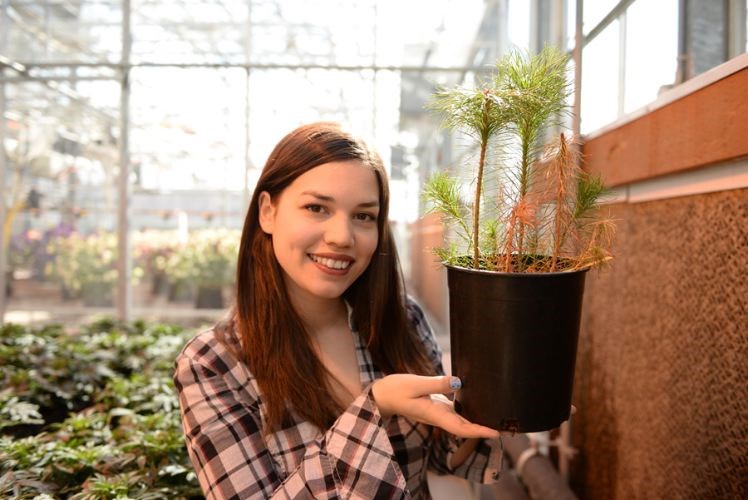An estimated eight million tree seedlings were damaged this season, affecting both industry and the province's tree planting plans.
That works out to about five per cent of the 264 million seedlings grown in nurseries across the province, said Allan Powelson, who is a reforestation specialist with the Ministry of Forests, Lands and Natural Resource Operations.
"We suspect the industry... the forest companies will have a significant if not greater impact on their seedlings," he said.
Almost two million seedlings were damaged out of the 50 million earmarked for Crown land, a first for the province.
"It happens every so often but not to this extent since I've been around anyways," said Pawelson, who has been in forestry since 1990.
A local student helped alert the province to the problem and prevented it from wasting dollars planting dead trees in the ground.
Michelle Cundy works out of UNBC's greenhouse, which has a contract with B.C. to test samples from the various nurseries that supply its three programs, including the BC Timber Sales and Forests For Tomorrow.
"I was checking for the root growth and shoot growth of the seedlings," said the biology student, who this spring has been testing small sample numbers out of the sometimes 100,000-plus sized seed lots.
"There were quite quite a few that would not be able to survive outside at all."
When Cundy received the seeds from the various nurseries, she potted them in peat moss and watched them over two weeks.
"A lot of pine trees during the growth period were already showing really poor growth. Some of them were really, really yellowing, so indicating they weren't growing at all or starting to die already," she said, adding those findings were further supported when she tested the roots.
Cundy sent her results in late March and Powelson said they also received notice from nurseries.
The problem seeds have been traced back to open grown pine, which weren't protected from the fall weather.
"We had an extended warm period in the fall followed by a quick cold snap and so the seedlings hadn't set themselves up to be ready for that drop in temperature," said Powelson, who heard also heard from nurseries about the growth problems.
Powelson said the ministry is still in talks with nursery contractors about what it will mean for their season.
"We're kind of working through that now," he said. "Typically the nurseries have to deliver a living product."
It'll be important to monitor some of the land that skips planting this year for brush growth.
"You try and get seedlings in ground as fast as you can, so that they can grow faster than the other brush species on the site so we may have some problems in some cases with brush or grasses if we don't get them on there fast enough," he said, which adds to the expense.
Fast enough typically means just over a year-and-a-half after an area is harvested and it takes about a year to catch up.
Cundy said the work has sparked an interest in forestry.
"After doing this I realize that's a really crucial step for them and I just felt really good that I could contribute to that," said Cundy, 24, who has one year left in her degree and is considering tree planting this summer.
Five per cent may not sound like a big number, Powelson said, but it will have an impact on a large number of workers this season.
"The expensive part is tree planting," said John Orlowsky, UNBC's greenhouse curator, of the importance of catching bad seeds early.
"This was kind of a freak accident but the system was set up to catch this kind of thing and we caught it and that's good," said Orlowsky.
Cundy is the first student to work on the contract, which is now in its second year with the university.
Last year Orlowsky said the seedlings passed with "flying colours" but this year quite a lot of the pine seed lots produced 25 to 50 per cent dead trees during the testing period.
Orlowsky is proud that Cundy - and UNBC - contributed to the discovery.
"We are part of the community and we have an impact on what goes on in our community."



